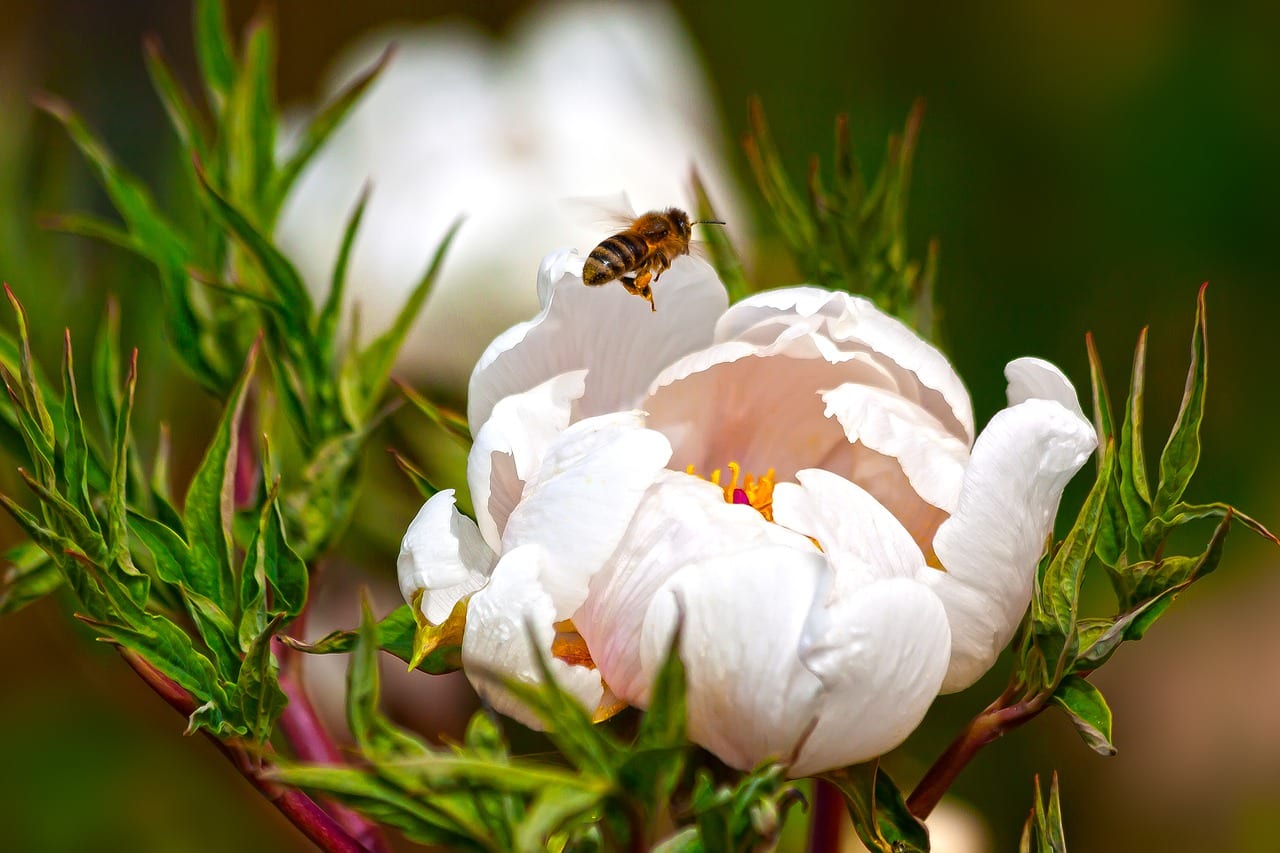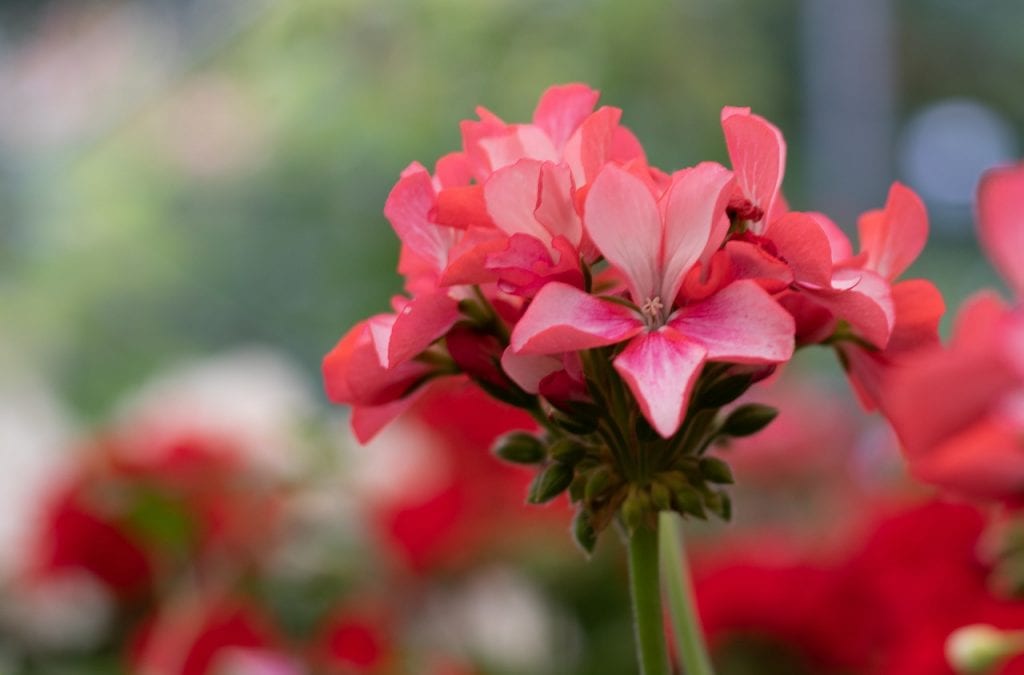
Perennials are flowers or other plants that live for several years, and bloom all year round. They grow tiny buds that grow into full-fledged flowers and bloom through the different seasons of the year. These plants could grow a few inches high or may even grow up to 3 or 4 feet (1.22 m) high. What these flowers have in common is that they are able to thrive and grow in all types of weather. These plants can grow in bad weather and even with a lack of water. Such flowers have an added value – they produce pure and essential oils that are important for therapeutic uses. These flowers are aesthetic and will brighten up any garden in terms of color and abundance. A garden that looks good all through the year is a boon for any homeowner. A novice will need a handy list of flowers.
The Advantages
There can be no doubt in anyone’s mind that having a beautiful garden throughout the year is a challenge! How plants grow largely depends on where they grow. Also, growing conditions will play a major role in determining the health of a garden. For a novice, choosing the ideal flowers can be quite a task. It’s quite obvious, then, that planting flowers that grow throughout the year has its advantages. You will save a lot on water, as these flowers don’t require much maintenance. You will also save time and effort, especially if you are a working person, or new to the world of gardening. If you want to witness beauty in your garden, read on to discover an interesting list of flowers that will be the pride of your garden every month of the year.
The Siberian Iris
The Siberian Iris is a truly wonderful flower that will enhance the charm of any garden. It is a favorite flower of most green thumbs as it is tough and great to look at. The flower comes in lavender, white, yellow, or blue colors. This flower can grow up to a height of 24 to 36 inches (0.91 m). These flowers usually grow on clumps of grass and have appealing specks of contrasting yellow and white hues on their inner petals. This plant has the ability to look striking in the fall and winter with its beige-to-gold foliage and its unmistakable dark head of seeds. The plant holds itself high through the colder months of the year. Due to its striking head, it is a natural draw for birds as well.
Perennial Geranium
Whatever variety of the perennial geranium you plant, you will notice its lovely blue flowers, resembling the deep color of sapphires. Some flowers come in a soft yet distinctive lilac color too. The colors tend to prevail through harsh winter weather. Several plants of this variety grow around 20 (0.51 m) inches in height. The plants may grow, spreading up to 24 inches (0.61 m) in width. Most geraniums come up in spring, but this variety lasts through fall and winter. It is very colorful with its bottle-green foliage, which transforms into a reddish-brown in the fall. Varieties of geranium are always included in anyone’s list of flowers. Biokovo Karmina or Brookside, with its lace-like leaves, are great varieties to plant.

Sedum
When a garden needs a real boost of color, the sedum will create a unique shine-like quality that lasts. The flower has the wonderful ability to turn brighter as summer drifts into fall. Furthermore, the color of this flower gets even better and stronger as the temperature drops. Sedum comes in shades of peach and a bright, yet not gaudy, pink. It has luscious foliage that may be green, yellow, purple or variegated as the seasons progress from one to the other. It is a wonderful plant to have in any winter garden, adding an appropriate hint of color to prevent a dull look.
Candytuft
This lovely flower, giving the impression of snow, is a year-round plant that gives great accents to any garden come summer or winter. The flowers are pretty, white, fluffy blooms that grow in a cluster and dominate gardens in spring. Throughout the year, the plant leaves its evergreen foliage, and grows to a maximum height of 18 inches (0.46 m) tall and 24 inches (0.61 m) in width. The variety of Candytuft, which is called Autumn White, is a blissful alternate for gardeners who want to see more of the flower. This is a variety that blooms repeatedly, first in spring, then in the fall.
Hydrangea
Oak-leafed hydrangea has very distinguishing cone-shaped flowers, which bloom through most of the year, right from summer to the fall months. The flowers start their development as white blooms, but often change to a pink color by summer. Their leaves turn a burnished orange to purple in the autumn. These flowers may last almost till the winter months, but they are included in this list as they live longer. They don’t require much tending to either. Yet, they add character to any garden that needs livening up.
Forest Pansy
In spring, this plant has blossoms of lilac and pink color, with stems devoid of leaves. Soon, attractive deep purple, heart-shaped leaves will make their presence felt. In the fall, the leaves will disappear, but as this plant is multi-stemmed, you will see the plant doing well during winter too.
Hellebores Flower
This is a small yet noticeable flower with white borders and reddish internal petals. Its nectar is yellow, and the mix of colors offers a bright way to add depth to a garden in the throes of winter. Besides the variety that comes in a mixed deep burgundy and white color, there is also a variety available in burgundy. The plant is hardy, producing abundant flowers, and is very easy to grow. As this flower adds beauty to any dull winter landscape, it must be included in anyone’s perennial list of flowers.
Phlox
Though the ideal season for phlox to bloom in is the summer, this flower is robust and perennial. It is an extremely beautiful, freely growing plant, creating unstructured mounds of lilac flowers as it grows. Its low-growing nature allows it to sweep over porches and adorn the sides of paths. These flowers offer a heady scent, which is experienced in the evenings. It grows well in any garden, and especially well when it is blended with grasses, rudbeckias, and helianthus. Its appealing feature with most gardeners is that it is resistant to mold and mildew. The plant attracts butterflies and hummingbirds.
Cone Flower
Gardeners will always select cone flowers over any other perennials as they are immensely easy to grow and are available in several colors and sizes. In the summer and fall, flowers are purple, red, orange and white. In the winter, the pods of seeds are colorful too. Stems grow up to 2 to 5 feet (1.52 m). The plant enhances the beauty of any garden, small or large, and the seed pods provide a source of food for birds.
Threadleaf Tickseed
This is a demure yellow flower that can be grown in any season. It is often planted at any time between summer and fall. Though it looks simple enough, its bright yellow color adds joy to any garden, especially in gray winter months, even when temperatures fall below 0 degrees. It grows up to 18 inches (0.46 m) in height.
Bluestar
While it is essential for this flower to bloom in the months of May and June, it is a well-built perennial, fit for all weather. Each stem grows up to 2 or 3 feet (0.91 m) and has clusters of five or six blue flower petals. Though the petals are pale blue, flowers look filled and pretty as they grow in groups together. These flowers give texture to gardens throughout the year. Stems grow upright with lush, bright green leaves. The leaves turn a yellow-gold in the fall.
Blue Perennial Sage
For the blue perennial sage to start blooming and grow, it has to be planted between the peak of summer and fall. Initially, so that it blooms to its fullest capacity, the flower needs sunlight. It is a tall plant, growing to heights of almost 30 inches (0.76 m). It has a violet-blue color. Once it blooms fully, it stays that way in very cold temperatures too.
Sibirica
This flower is grown for its universal winter appeal. It has bright red stems that add brightness to any winter scene. It looks great at other times of the year as well with its leaves, variegated in nature. Leaves turn red in fall. The flowers of this plant appear in spring – they are small and white, and white berries last through winter.
Bigroot
Bigroots are a variety of the geranium family, and are strong flowers that are not influenced by extreme conditions like a lack of water, or very cold weather. They grow equally well in very hot climates too. Flowers are pink and fairly large. Most birds and insects don’t favor this plant because its nectar is devoid of any appealing taste.
Bergenia
The attractive leaves of this flower are large, glossy and pink. These flowers offer a bold look and can attract anyone’s attention to your garden. They provide a good variation to alternating patterns of flowers and add texture to any outdoor area. They start to bloom in spring, growing up to 12 inches (0.3 m) tall. You may opt for a pinkish-purple variety or pale pink or white flowers. Petals are heart-shaped and add aesthetic beauty. Foliage is bright and glossy green, which may or may not turn golden in the fall. Bergenia shows up in every professional gardener’s list of flowers.
